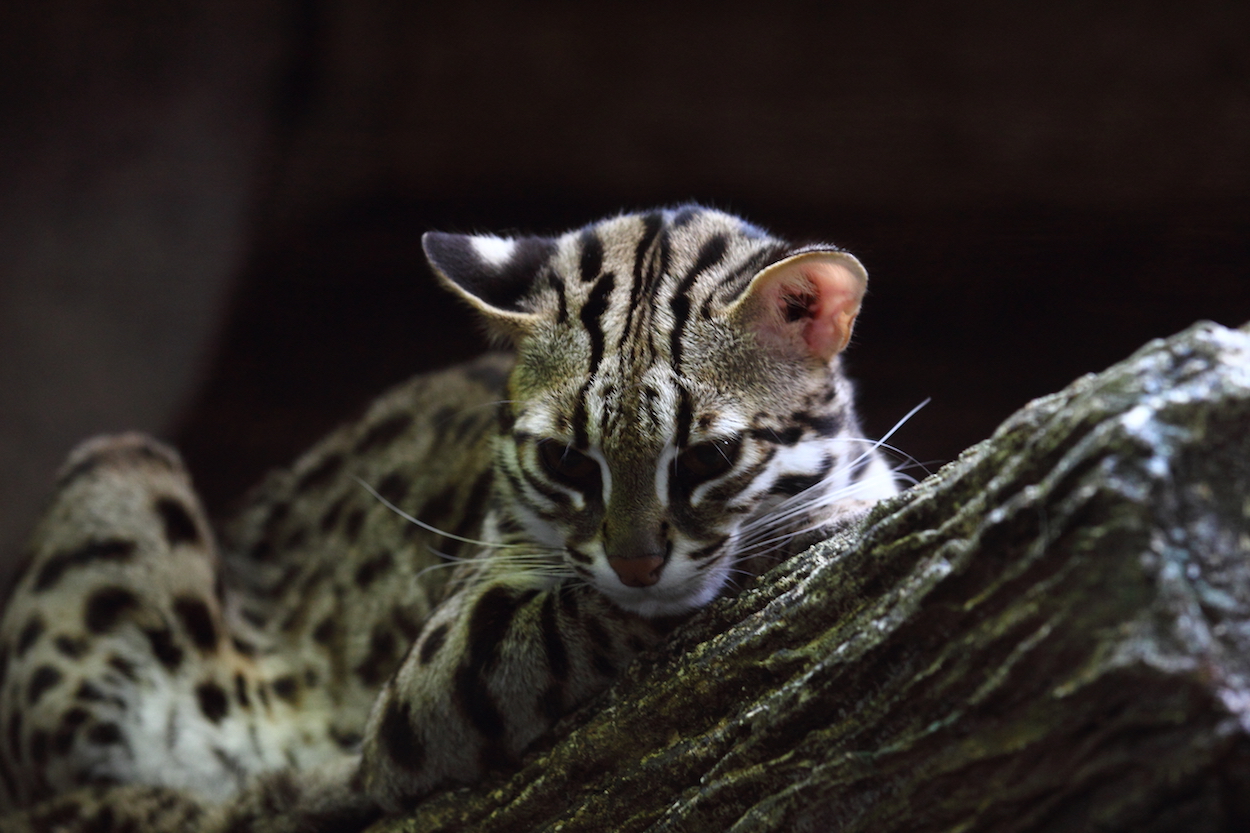by Brian Hioe
語言:
English
Photo Credit: Tambako the Jaguar/Flickr/CC
CONSERVATION EFFORTS for the Taiwanese leopard cat continue to face challenges with the politicization of the issue by pan-Blue political actors.
The Taiwanese leopard cat, not to be confused with the Formosan clouded leopard, is an endangered species. In many cases, leopard cats reside in mountainous or rural areas in Miaoli, Nantou, Changhua, and the greater Taichung area, though they have also been spotted in New Taipei and Hsinchu. Only five hundred Taiwan leopard cats have been spotted in the last ten years, leading to assessments that as low as only five hundred Taiwan leopard cats may remain in the wild. Other assessments suggest that fewer than 1,000 leopard cats remain in the wild.
 Photo credit: _paVan_/WikiCommons/CC
Photo credit: _paVan_/WikiCommons/CC
It is a particular issue that leopard cats are sometimes only discovered because they are struck by cars. County Highway 140 in Miaoli has been a site in which leopard cats fatalities have been frequently discovered, as well as on highways such as Provincial Highway 29 and Provincial Highway 13.
Leopard cat fatalities on roads have led researchers to set up cameras along stretches of road where leopard cats have been struck by cars to try and investigate why leopard cats are being struck by cars, as well as a detection system to be set up on a highway in northern Taiwan in May. Attempts to call attention to the plight of leopard cats have involved memes, exhibitions, and other activities.
This has had some effect on the government, with minister without portfolio Chang Ching-sen suggesting the need to conduct environmental assessments on how human development affects the natural habitat of leopard cats. Incidents of leopard cats being struck by cars can be national-level incidents in the news, given that the animal is highly endangered.
Nevertheless, an obstacle in the way of leopard conservation may come from KMT-run local governments. In April, Miaoli county councilor Han Mao-hsien of the KMT claimed that leopard cat populations were too high and that they had recovered to the tens of thousands, which is why there have been so many incidents of leopard cats being struck by cars.
Apart from this incident being another example of disregard for the environment by KMT politicians, one notes that the pan-Blue camp has in some cases been hostile toward Taiwanese leopard cat preservation efforts. The Taiwanese leopard cat, as with other animals native to Taiwan such as the Formosan black bear, has become a symbol of Taiwanese identity. Yet the pan-Blue camp’s pan-Chinese nationalism may call for the denigration of such symbols of identity.
 Photo credit: Kuribo/WikiCommons/CC
Photo credit: Kuribo/WikiCommons/CC
As such, one has observed attempts to depict the Taiwan leopard cat as a dangerous animal to humans and livestock from pan-Blue media outlets. In March, CtiTV—which skews heavily toward pan-Blue media coverage—ran a report claiming that the Taiwanese leopard cat was a more dangerous animal to humans than the Chinese panda, despite the obvious fact that the Chinese panda is a bear many times larger than the cat-sized Taiwan leopard cat. The aim of the report was likely to denigrate the Taiwanese leopard cat as a symbol of Taiwanese identity by claiming it was dangerous while suggesting that the Chinese panda, a symbol of Chinese identity, was not dangerous. At the time, netizens mocking CtiTV for this coverage created a satirical Facebook event entitled, “I Support Locking CtiTV Journalists in the Same Cage as a Panda Bear.”
Consequently, local governments have not always been on board with leopard cat preservation efforts. A bill to strengthen Taiwanese leopard cat preservation efforts was voted down by 9 to 25 early in June by the Miaoli county council, something which may not be surprising seeing as the Miaoli county council is currently dominated by the KMT. Efforts to protect the Taiwan leopard cat continue to face an uphill struggle, then.

